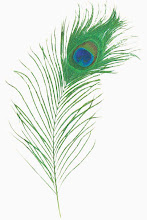Kripal
Singh Shekhawat was a renowned craftsman and ceramist of India. He was famous for
his skills in Blue Pottery of Jaipur and is credited for
the revival of that art in India
Life and career
Born
in the western Indian state of Rajasthan in
1922, he studied original painting at the Shanti Niketan in West Bengal and
later did a diploma in Oriental Arts from the Tokyo University,
Japan.
He
was also the director of Sawai Ram Singh Shilpa Kala Mandir at Jaipur where he
taught Indian painting and Blue Pottery.
He
was conferred the Padma Shri in 1974 and was also honoured with the
title Shilp Guru by
the Government of India in 2002. Unknown to many,
Kripal Singh is renowned for his illustrations in the original document of
the Constitution of India.He died on February 15, 2008 in Jaipur.
Art
A
distinguished traditional artist, Kripal Singh's paintings are poetic. They
carry the expression of the traditional and early styles of painting with bold
innovations in a delicate and refined manner. His works also claim an important
historical place in the organic evolution of traditional paintings. There is no
one who can create his style of painting with great detail he has shown the
birds, clothes, animals flowers which shows the dedication with which he
creates a real painting.
Legacy
He
revived the art of blue pottery, with the help of patrons such as Kamladevi Chattopadhyay and Rajmata Gayatri Devi.
He learnt all the secrets of the nearly extinct art as it had been perfected in
Jaipur in the 19th century, and made many changes to make it a modern practice.
His hard work helped re-establish an entire tradition.Despite rumours to the
contrary, Kripal Kumbh, the pottery studio founded by Kripal Singh Shekhawat is
still in operation. It is run by his wife Sajjan Kanwar assisted by her three
daughters, Minakshi, Himani and Kumud Rathore.
Works
Sharma, Bhawani Shankar, and Kripal Singh Shekhawat. 2007. Kripal
Singh Shekhawat: virtuoso of line and colour. New Delhi
Khandalavala, Karl J., and Kripal Singh Shekhawat. 1974. Wall
paintings from Amber. New Delhi
Akademi. Portfolio comprising copies of the now damaged murals made
by Kirpal Singh Shekhawat.
|
“A
distinguished traditional artist, Kripal Singh's paintings are poetic. They
carry the expression of the traditional and early styles of painting with
bold innovations in a delicate and refined manner. His works also claim an
important historical place in the organic evolution of traditional paintings.
There is no one who can create his style of painting with great detail he has
shown.”
Kripal Singh Shekhawat, also known as father of Blue Pottery, was born in a Rajput family on Kripal Singhji’s first formal training in drawing and painting was under Sh. Bhur Singh Shekhawat, and then in Kripal Singhji studied original painting at the Shanti Niketan in He revived the art of blue pottery which had become dead. He made many changes with the designs and also came up with new shades of green, yellow, brown, black etc. It was only due to his innovative work that the blue pottery has acquired the fame it has, today. For his tremendous contribution to blue pottery, Kripal Singhji was conferred the “Padma Shri” in 1974 and was also honoured with the title “Shilp Guru” by the Government of India in 2002. Unknown to many, Kripal Singhji is renowned for his illustrations in the original document of the Constitution of India. Other than the above mentioned awards, he was awarded Fellowship of Calcutta Art Society in 1950. Was awarded five times between 1957 to 1961 by Kripal Singhji work can be found at various prominent places like, National Gallery of Modern Arts ( During his lifetime, Kripal Singhji held many important designations like, Art Teacher at Shanti Niketan (1948-1951), Director of Sawai Ram Singh Shilpa Kala Mandir, Director of Bank of Baroda (1977-1981), Director of Rajasthan Small Scale Industries (1981-1991), Chairman of Rajasthan Lalit Kala Academy (1997-1999) and many more. Some of the mural work Kripal Singhji undertook were, Bharat Carries Rama’s Sandals (1945), Life of Gandhi (1955-1958), in the fresco technique at Birla House. |
||
|





कोई टिप्पणी नहीं:
एक टिप्पणी भेजें